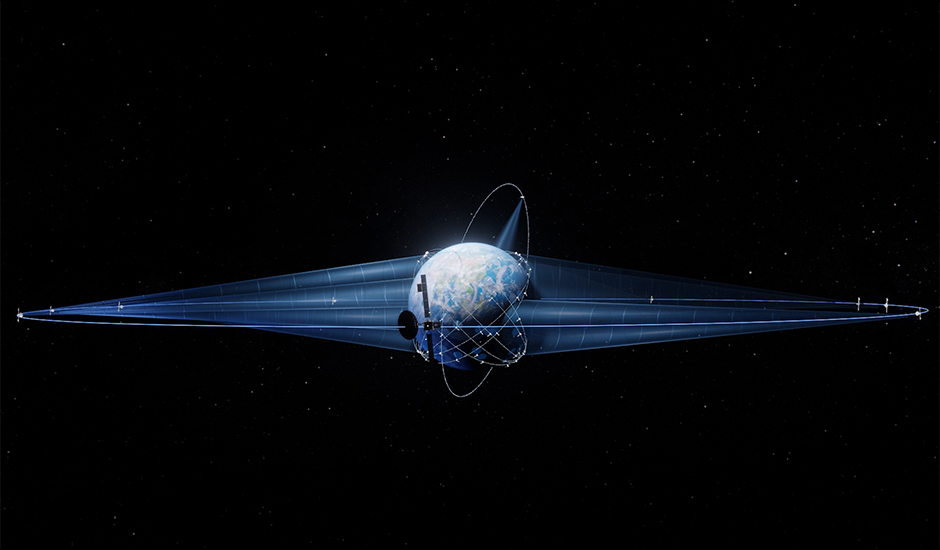Inmarsat Well-Positioned to Innovate toward a Unified Space Force Vision for SATCOM
By Steve Gizinski, President, Inmarsat Government
From its very beginning, the U.S. Space Force has embraced cultural change when it comes to satellite communications (SATCOM). No longer satisfied with “status quo,” the Space Force has sought to partner with industry to swiftly field flexible SATCOM systems, networks and products that significantly improve resilience and operational agility.
“(We) will leverage (military) and commercial systems, capabilities and products to deliver connectivity to users in all operational conditions, especially in CDO (contested, degraded and operationally limited) environments,” said the “United States Space Force Vision for Satellite Communications”, released just a month after the Armed Forces branch was launched in December 2019. “Within tactically-relevant timelines, (we) will quickly reroute users and their networks to other SATCOM resources and dynamically adjust to any unpredictable CDO environment. The enterprise will provide interoperability and enhanced resiliency by giving users the ability to access multiple diversified and proliferated SATCOM capabilities, allowing users to operate through CDO environments.”
While taking part in a panel discussion at the Satellite Industry Association (SIA) 18th Annual DoD Commercial SATCOM Workshop, I had the opportunity to elaborate upon how Inmarsat’s business model is already well-aligned with the Space Force’s vision. We are focused on implementing solutions with government users in mind, delivering SATCOM mobility, flexibility, redundancy, throughput, resilience and protection to complement government satellite resources, anytime, anywhere.
Our vision is fully aligned with the Space Force’s current and future requirements – an integrated space, air and ground communications architecture supporting multi-service operations worldwide along with an Enterprise Network Management system for situational awareness and control. Inmarsat owns and operates global, multi-orbit, multi-band, spacecraft-diverse networks, including ELERA L-band and Global Xpress (GX) Ka-band. The addition of ORCHESTRA’s GEO, HEO, LEO and 5G will further enhance robustness, seamlessness and flexibility for government customers.
We have developed a fully-funded, strategic roadmap based upon innovation and improved capabilities, with the following examples of our user-centric, complementary innovation supporting the Space Force vision:
- GX Military (Mil) Ka-band steerable beams are interoperable with the Wideband Global SATCOM (WGS) system. The ability to combine affordable GX commercial services with our steerable beam technology enables users to roam between commercial Mil Ka-band and MILSATCOM, opening up considerable capabilities and flexibility.
- L-TAC (L-band Tactical Satellite) augments UHF SATCOM and the Mobile User Objective System (MUOS) affordably today through the DoD’s ability to leverage already fielded radios to access L-TAC capability globally.
- LAISR (L-band Airborne Intelligence, Surveillance and Reconnaissance) global mobility, resilient subscription service establishes on-demand access to multi-megabit data rates (forward and return) through low-profile, small form-factor, LAISR user terminals.
- LACE II (L-band Advanced Communications Element) integrates the latest advancements in compact, high-throughput L-band terminals with efficient terminal size, weight and power (SWaP). It is a high-gain, two-way terminal that delivers record-breaking, multi-megabit data rates across Inmarsat’s ELERA worldwide L-band network.
- InRange ensures rapid, responsive and cost-effective launch telemetry from space, removing the need to construct and maintain costly ground-based launch infrastructure. Enabled by ELERA, InRange helps remove “black-out” phases that exist with terrestrial coverage of launches when switching from one ground station to the next.
- InCommand brings commanding and telemetry on-demand for space assets operating below geostationary orbit. Also enabled by ELERA, it provides real-time connectivity for space relay in support of low and medium earth orbit satellites.
- G-MODMAN II is a flexible, easy-to-use modem manager that seamlessly integrates with existing antenna systems. It supports the implementation of the current and future generation of GX services and aero terminals across multiple aviation platforms.
- BLACK ICE Software Defined Radio (SDR) modem family allows for flexible waveform integration and provides low-SWaP terminal solutions that meet challenging, mission-specific requirements for security, flexibility and high performance.
It is very encouraging to see that there seems to be a consensus between the military and industry about what is needed: The pursuit of the right mix between government and commercial space-based capabilities, resiliency, flexibility, security and affordability. Military and government users need immediate and assured access to resilient, robust, diversified and cyber-protected SATCOM services that support mobility around the globe, across the full spectrum of engagement. Thus, it has become abundantly clear that an architecture that integrates commercial with MILSATCOM represents the correct path forward.
As the Space Force locks in on its future vision, our business model presents advantages that are both practical and innovative for our ongoing partnership. Our near-future technology innovation and long-term advancements will continue to deliver immense amounts of SATCOM capacity, capability, flexibility and data security/cybersecurity anywhere in the world, with the reliability and availability that proves critical to achieving mission success. If you would like to learn more about our collaborative and technically assured approaches, then please contact us.




